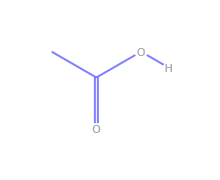


Archived from the original (Part of this paragraph is public domain material copyright 18) on. The ARTFL Project, University of Chicago.
^ a b "Webster's Revised Unabridged Dictionary (1913 + 1828)". "Webster's Revised Unabridged Dictionary (1913 + 1828)".  ^ Heterogeneous Mixtures, in chemistry, is where certain elements are unwillingly combined and, when given the option, will separate. rocks (geology) are inherently heterogeneous, usually occurring at the micro-scale and mini-scale. Geology Įarth is a heterogeneous substance in many aspects. A reaction between a gas and a liquid, a gas and a solid or a liquid and a solid is heterogeneous. A reaction between two gases or two miscible liquids is homogeneous. Reactions that take place on the surface of a catalyst of a different phase are also heterogeneous. Homogeneous reactions are chemical reactions in which the reactants and products are in the same phase, while heterogeneous reactions have reactants in two or more phases. The phenomena to be considered are mass rates and reaction. Various models have been proposed to model the concentrations in different phases. A mixture can be determined to be homogeneous when everything is settled and equal, and the liquid, gas, the object is one color or the same form. Examples are: mixtures of sand and water or sand and iron filings, a conglomerate rock, water and oil, a salad, trail mix, and concrete (not cement). Entropy allows for heterogeneous substances to become homogeneous over time.Ī heterogeneous mixture is a mixture of two or more compounds. For example, adding dye to water will create a heterogeneous solution at first, but will become homogeneous over time. Heterogeneous solids, liquids, and gases may be made homogeneous by melting, stirring, or by allowing time to pass for diffusion to distribute the molecules evenly.
^ Heterogeneous Mixtures, in chemistry, is where certain elements are unwillingly combined and, when given the option, will separate. rocks (geology) are inherently heterogeneous, usually occurring at the micro-scale and mini-scale. Geology Įarth is a heterogeneous substance in many aspects. A reaction between a gas and a liquid, a gas and a solid or a liquid and a solid is heterogeneous. A reaction between two gases or two miscible liquids is homogeneous. Reactions that take place on the surface of a catalyst of a different phase are also heterogeneous. Homogeneous reactions are chemical reactions in which the reactants and products are in the same phase, while heterogeneous reactions have reactants in two or more phases. The phenomena to be considered are mass rates and reaction. Various models have been proposed to model the concentrations in different phases. A mixture can be determined to be homogeneous when everything is settled and equal, and the liquid, gas, the object is one color or the same form. Examples are: mixtures of sand and water or sand and iron filings, a conglomerate rock, water and oil, a salad, trail mix, and concrete (not cement). Entropy allows for heterogeneous substances to become homogeneous over time.Ī heterogeneous mixture is a mixture of two or more compounds. For example, adding dye to water will create a heterogeneous solution at first, but will become homogeneous over time. Heterogeneous solids, liquids, and gases may be made homogeneous by melting, stirring, or by allowing time to pass for diffusion to distribute the molecules evenly. 
In chemistry, a heterogeneous mixture consists of either or both of 1) multiple states of matter or 2) hydrophilic and hydrophobic substances in one mixture an example of the latter would be a mixture of water, octane, and silicone grease. Main article: Homogeneous and heterogeneous mixtures Various disciplines understand heterogeneity, or being heterogeneous, in different ways. This is known as an effective medium approach, or effective medium approximations. Hence, an element may be homogeneous on a larger scale, compared to being heterogeneous on a smaller scale. The concepts are the same to every level of complexity, from atoms to populations of animals or people, and galaxies. Similarly, heterogenous is a spelling traditionally reserved to biology and pathology, referring to the property of an object in the body having its origin outside the body. But use of homogenous to mean homogeneous has seen a rise since 2000 sufficient enough for it to now be considered an "established variant". Īlternate spellings omitting the last -e- (and the associated pronunciations) are common, but mistaken: homogenous is strictly a biological/pathological term which has largely been replaced by homologous. The words homogeneous and heterogeneous come from Medieval Latin homogeneus and heterogeneus, from Ancient Greek ὁμογενής ( homogenēs) and ἑτερογενής ( heterogenēs), from ὁμός ( homos, “same”) and ἕτερος ( heteros, “other, another, different”) respectively, followed by γένος ( genos, “kind”) -ous is an adjectival suffix.
3.1.1 Homogeneous and heterogeneous reactions.








 0 kommentar(er)
0 kommentar(er)
